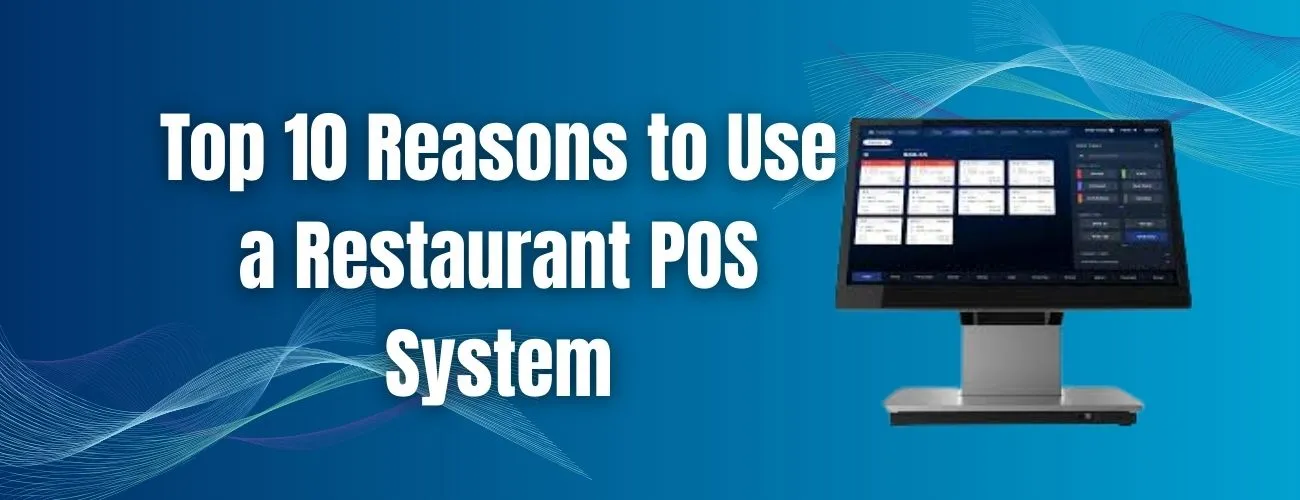Why Every Restaurant Needs a POS System for Success
Operating a restaurant pos is a combination of talent and technique. A second is calculated from when the order is taken right up to the delivery of a meal, by which a POS for a restaurant manages to convert all that chaos into a smooth, seamless process. It is a convenience to the kitchen and the staff; it delivers into one application payments or an easy way to manage operations.
If ever there were things needed by the present-day striving food business, state-of-the-art POS is one such need per se. It saves time, cuts out errors, and brings your team to where it matters most: Customers are delighted.
What Is a Restaurant POS?
A restaurant point-of-sale system is a fancy way to describe a computerized command center for food service pretty ambitious multiplier of capabilities over cash register operations. There are catchments even further into the order-processing sphere: cash management, order entry, payment processing, and inventory management.
Unlike earlier systems, most newer ones integrate with delivery apps and systems for customer loyalty and display kitchens. These are systems that allow the orders to be finished quickly, enable payments to be processed more easily, and guarantee leaving customers with satisfaction.
Advantages of Using a Restaurant POS System
It urgently saves time during peak hours. Instead of manual entry of orders and computation of bills, your staff sends them directly to the kitchen with a few clicks. Thus, service speeds up with less margin for human error.
It improves customer accuracy in billing. The splitting of bills, application of discounts, and payment through a variety of methods; everything is implemented quickly and without any confusion. The outcome? Quicker turnover of tables and happy customers.
How a POS Improves Restaurant Management
A POS shows owners reports about their sales in a given day, the most popular menu items, and the status of their inventory. All this information will enable you to make sound decisions for restocking or promoting dishes.
It has to make staff management easy. One can log working hours, track performance, and identify training needs. You get all of this information in your POS dashboard, even if you do not have time to be in the restaurant.
Key Features of a Restaurant POS
1. Order Management
- Table and seat mapping
- Quick menu navigation
- Custom order notes
- Split bill functionality
- Kitchen order printing
2. Payment Processing
- Multiple payment options
- Contactless transactions
- Tip suggestions
- Gift card support
- Refund and exchange management
3. Inventory Control
- Ingredient-level tracking
- Low stock alerts
- Supplier management
- Automatic purchase orders
- Multi-location inventory sync
Why Modern Restaurants Prefer POS Systems
Moving fast is a requirement for restaurants nowadays. The POS system eliminates delays by generating one step after the other digitally. Orders go from the waiter`s handheld device to the kitchen display, and payments take seconds.
The reports are generated in no time. This way, customers get to be happy, and many others can be serve. In the restaurant business, every extra table served equates to revenue.
POS for Small vs. Large Restaurants
To simplify the process, small cafés and food trucks keep using POS in their trade: mobile payment and quick order entry ease out everyday work. For more prominent operations, capabilities such as table reservations, multi-branch inventory, and employee role management hold importance.
A good restaurant’s Point of Sale can scale. You will be able to start small and add features as your business grows without changing systems.
Boosting Customer Experience with POS
From restaurant points of sale, we can store customer preferences. This means that staff can recall a guest’s favorite drink or dietary concerns. Personalized attention gives customers a reason to feel valued.
It also facilitates loyalty programs. Customers collect points and redeem rewards, which triggers a repeat visit. Happy customers often turn into non-stop ones, and those become a fixed source of revenue.
Integration with Online Ordering
The food delivery market is on a boom. There is a direct integration facility of the restaurant ‘point of sale’ in the delivery apps, websites, as well as social media ordering systems. All the channels now converge to one place without requiring multiple devices.
The error count goes down; the speed of delivery improves. The better the process, the better it is for customers.
Data and Insights for Growth
A POS offers live data analytics. You get to know which dishes are the best sellers, which are the busiest days, and how all the branches are doing. You can adjust your menus, prices, and promotions according to the above information.
This also eases the accounting part. Daily reports keep your financial records clear and ready for tax season.
Security and Compliance
POS serves as a stronghold for the payment data securely, ranging from encryption to PCI DSS compliance standards. This applies not just to your business but also to your customer.
It also combats theft. It prepares detailed reports of every transaction, which makes it easier to spot unusual activities.
Trends in Restaurant POS Technology
The future of restaurant POS is mobile and cloud. Now orders can be taken anywhere in the restaurant, and it’s even easier with a tablet or smartphone. With cloud storage, you can see the sales and the reports anytime, anywhere.
Artificially intelligent analytic programs are also becoming mainstream. The busy periods will be predicted, and suggestions for menu-change advisement will be given, predicting when ingredients will be used up.
Choosing the Right Restaurant POS
Your point of sales (POS) decision involves considerations such as menu size, number of employees, and service type. Search for features that you will use every day instead of purchasing extras that you don’t need.
Always test the interface. Staff should learn it without any major hiccups. Complicated systems slow down service, whereas a simple, concise POS will keep the wheels of service turning.
Installation and Training
Installing a POS is the first step; however, the training of the staff is essential. Go for a provider that can assist you with guidance, quality setup, and support.
Start with basic functions and pile on advanced tools later so staff feel comfortable before dealing with more complex tasks.
How POS Increases Profitability
All in all, POS is thought to save time, waste, and increase accuracy; that is, reduce expenses and increase earnings. That’s how much quicker service translates to more tables served per day.
Repeat sales are further helped along by loyalty schemes and targeted promotions. The better you know your customers, the better you will be able to serve them.
Conclusion
A restaurant POS is more than a billing tool-it’s the heart of a modern food business. It connects every part of your operations, from the dining floor to the kitchen and beyond. A POS has the command to set your restaurant for success in the long run by throughput improvement, accuracy enhancement, and adding to the customer experience. No matter whether you are a small cafe or a big chain, the right system would be able to help you serve better, grow faster, and stay ahead in the competition in the dining industry.






